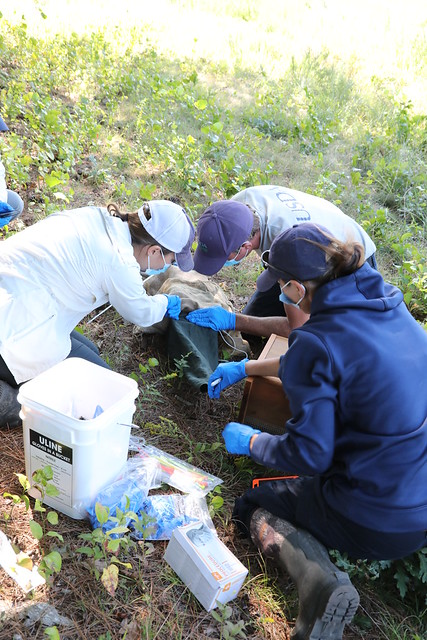
Many claim that 2020 has been a year of chaos and calamity, but for one rare squirrel, it might be a year of hope and new beginnings. The Delmarva Fox Squirrel (DFS) is a subspecies of fox squirrel found on the eastern shore of Maryland, Southern Delaware and Virginia. This pudgy, slow squirrel with its signature size and silvery-white coat has become a conservation success story in Maryland. Habitat loss along with other additive factors landed them on the Federal endangered species list in 1967. Protection and management efforts benefited DFS and in 2015, populations reached stable limits and they were officially delisted in Maryland. In parts of Delaware, DFS populations were not as prolific and numbers began to dwindle over time leaving only a few small populations.
Delaware Fish and Wildlife (DFW) translocated squirrels to the state in the mid-80s, but several conditions impeded success. With lessons learned and a new strategy, DFW once again set forth to supplement populations in the state. DFW, working with the U.S. Fish and Wildlife Service, Blackwater National Wildlife Refuge, Maryland Department of Natural Resource, USDA-Wildlife Services (USDA-WS), and other partners, developed a plan to translocate DFS to approved areas in Delaware.

USDA-WS was asked to trap and transport the squirrels from Maryland to new homes in Delaware. The partnership targeted the first round of squirrels in Fall 2020 on private lands slated for timber harvest. In mid-September, USDA-WS crews set 61 cage traps pre-baited using cob corn, pecans and/or walnuts. On September 22, 2020, specialists baited and set the traps with the goal of capturing 15 individuals both males and females in accordance with trapping protocols. Within two days, USDA-WS had trapped 20 Delmarva fox squirrels, exceeding the required amount needed for relocation.
USDA-WS staff covered each occupied trap to reduce stress and then coaxed DFS into a heavy cloth sleeve for containment and handling, preventing risk of injury for both the squirrels and specialists. Squirrels were then sexed, aged, weighed and evaluated for attributes such as coat condition and presence of disease. Selected squirrels were placed in nest boxes and driven to Assawoman Wildlife Area in southern Delaware where state wildlife staff eagerly awaited their arrival.

The squirrels were kept in the nest boxes overnight to give them time to rest and recover from trapping and transport. The next morning each squirrel received a pit tag (similar to a microchip), outfitted with a radio collar, and returned to their nest box. Nest boxes with squirrels safely secured inside were placed in areas with ideal habitat such as open, old growth woods, predominately of pine. Once positioned, the box entrance was opened. On the morning of September 23, 2020, the first DFS ventured out into the woods of Assawoman Wildlife Management Area, breaking decades of absence.
Delaware Fish and Wildlife crews will spend the next few months following these pioneering 15 squirrels as they navigate and ultimately settle in their new homeland. They won’t be lonely for long as USDA-WS will once again trap and transport an additional 15 DFS to help boost the population in Spring of 2021. USDA-WS crews enjoyed the experience and are grateful to play a role in such a monumental conservation effort!


